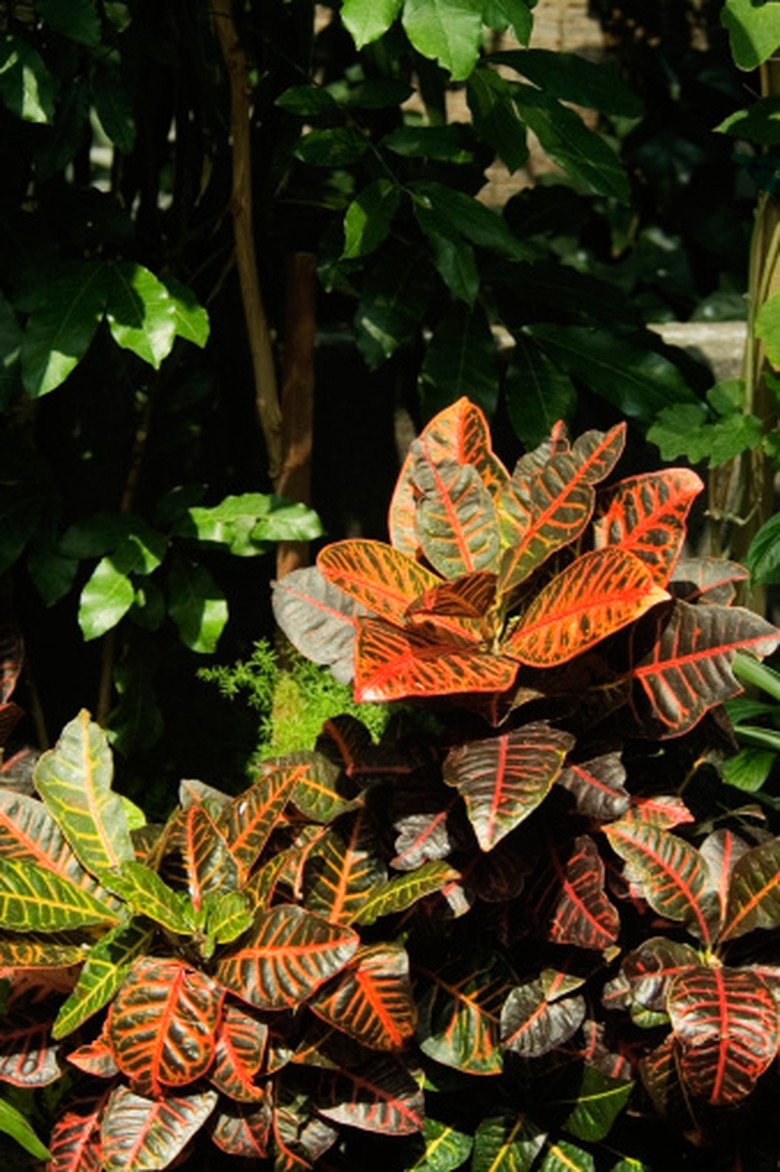Croton Light Requirements
Crotons (Codiaeum variegatum) are prized for their bright leaves, which may be green, red, gold, purple or yellow, depending on the variety. Croton is a tropical plant suitable for growing in U.S. Department of Agriculture hardiness zones 10 and above.
Crotons (Codiaeum variegatum) are prized for their bright leaves, which may be green, red, gold, purple or yellow, depending on the variety. Croton is a tropical plant suitable for growing in U.S. Department of Agriculture hardiness zones 10 and above. Elsewhere, crotons add interest to the environment as an indoor plant. While crotons are relatively easy to get along with, adequate light is critical.
Outdoors
When grown outdoors, crotons benefit from bright, direct sunlight at least six to eight hours per day. While crotons are still attractive when the plant is grown in partial shade, full sunlight brings out the most intense color variations and contrasting shades of the foliage.
Indoors
Crotons grown as indoor plants need direct sunlight from your brightest window for at least six to eight hours per day, especially during the winter months. Low light is supplemented by placing your croton under a fluorescent light. Use one or two bulbs — either regular fluorescent bulbs or grow lights. Locate the bulbs about 14 inches above the plants. Signs of inadequate light include spindly growth, faded colors and leaf dropping.
- Crotons (Codiaeum variegatum) are prized for their bright leaves, which may be green, red, gold, purple or yellow, depending on the variety.
- Crotons grown as indoor plants need direct sunlight from your brightest window for at least six to eight hours per day, especially during the winter months.
Water
Pay particular attention to crotons planted in bright, direct sunlight, as plants exposed to bright light require more water than crotons in partial shade. Water outdoor crotons deeply — saturating the root zone — whenever the top of the soil feels slightly dry, then allow the soil to dry slightly before watering again. Slight drying of the soil is important, as crotons may rot in soil that is consistently soggy. Indoor watering is similar. Water your croton generously when the top 1/4 to 1/2 inch of soil feels dry, then let excess water drain through the hole in the bottom of the pot. Check your croton often, especially if it is located in a window with bright light from a southern or western exposure.
Maintenance
Croton needs to be placed away from drafty doors and windows, or the plant may respond by dropping its leaves. Provide humidity to an indoor croton by placing the pot on a tray filled with wet pebbles. Feed crotons monthly during spring and summer. Use a general purpose liquid or dry fertilizer for outdoor-grown crotons, and a liquid fertilizer for indoor crotons. Apply fertilizer strictly in accordance with the manufacturer's specifications, which are listed on the package label.
- Pay particular attention to crotons planted in bright, direct sunlight, as plants exposed to bright light require more water than crotons in partial shade.
- Water outdoor crotons deeply — saturating the root zone — whenever the top of the soil feels slightly dry, then allow the soil to dry slightly before watering again.
